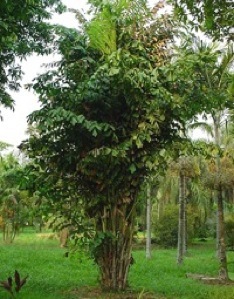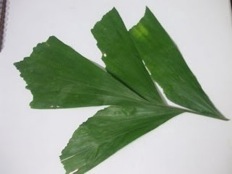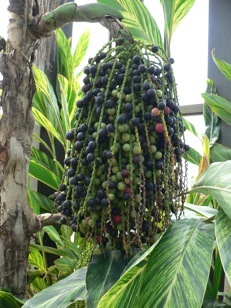Caryota: Fishy Toxic Palms
Often the botanical name of a species tells you nothing about the plant. Magnolia comes to mind. It’s a person’s name. However “urens” does enlighten, Caryota urens specifically.
Caryota urens is the Fishtail Palm, so called because the bi-pinnated leaves resemble the back end of a fish. Urens means “stinging” and the fruit does contain a chemical that does sting. That said, the kernel of the fruit is edible but it has to be cleaned completely of the stinging outer flesh.
One of the odd thing about the genus is when it fruits the trunk the fruit is on dies. The single trunk Caryota urens grows fast and lives to between 20 and 25 years old but when it fruits, that’s the end of it, though it can take years to die. The multi-trunk species, Caryota mitis does better and grows a source of more trunks. But, they too die, fruiting from the top down.
As a forager I am used to being told this or that species is toxic. This was one so-called toxic plant that was true. However, that did not keep natives from using this palm. The primary product of the genus is a sugar substitute called kitul honey or jaggery. The juice from the flowers is boiled in a large wide-mouth vessel making golden syrup. The fruits have raphides of calcium oxalate and are not eaten. The seed kernel is edible, however.
The growing tip of the palm is also edible as is the palm heart. The sap can also be fermented. Leaves are used for animal fodder, being 2% protein and 9.3% fiber. The sheathing leaf bases provide a strong fiber for brushes. Wood is used to make spears and used like gutters or pipes to carry water.
There are about 15 species of Fishtail Palm, C. urens is used the most. C. mitis has become an invasive in Florida. The botanical name, Caryota, (kair-ree-OH-tuh) is from Greek and means “nut.” Urens (UR-ens) means burning. Mitis (MIT-iss or MY-tis) means soft, referring to the sheathing leaf bases particularly found on the smaller species.
Green Deane’s “Itemized” Plant Profile
IDENTIFICATION: Fronds resemble fish tails. Inflorescences can grow to 10 feet long emerging at the nodes, from the top of the palm down.
TIME OF YEAR: Fruits after 15 to 25 years then continuously until it dies.
ENVIRONMENT: Prefers rich, moist soil and much sun but can tolerate some shade and dry conditions.
METHOD OF PREPARATION: Sap is boiled into a syrup or fermented into wine or a spirit. The growing tip of C. urens is edible as is the heart and young leaf shoots cooked. The seed kernel of both are also edible but the pulp of the fruit of both is not. The bud of the C. mitis is edible after cooking but remains bitter.




